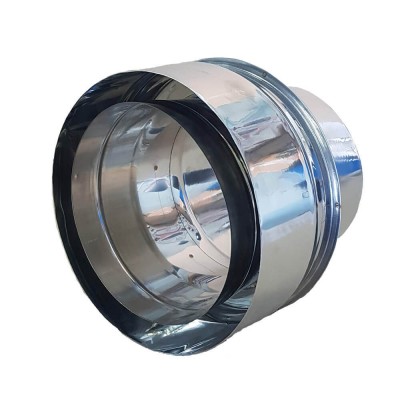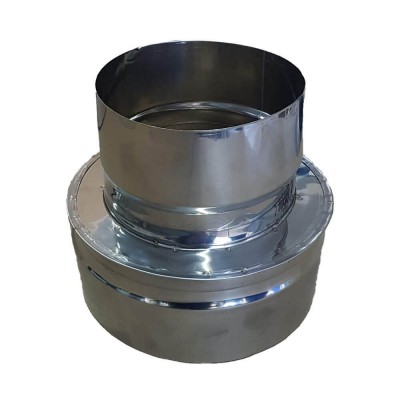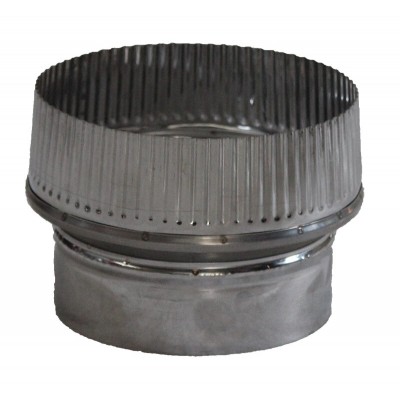- OFFERTE
-
Riscaldamento
Riscaldamento Prity
- Stufe a Legna Prity
- Termostufe a Legna Prity
- Stufe a Legna con Forno Prity
- Termostufa a Legna con Forno Prity
- Stufe a Legna in Ghisa Prity
- Cucina a Legna Prity
- Termocucina a Legna Prity
- Camini a Legna Prity
- Inserti Camini Prity
- Termocamini a Legna Prity
- Inserti Camini Ventilato Prity
- Camini in Ghisa Prity
-
Canne Fumarie
- Serbatoi per acqua
- Serbatoi Accumulo
-
Pezzi di Ricambio
- Riscaldamento Centrale
- Cucina
- Home
- Installazione
- Riduzione Canna Fumaria
- Riduzione Canna Fumaria, Acciaio Inox AISI 304, Ф80F-100M

Riduzione Canna Fumaria, Acciaio Inox AISI 304, Ф80F-100M
€ 22,00
Della stessa marca
l sistema fumario mono parete tradizionale offre grande praticità nel montaggio, grazie alla perfetta calibratura ottenuta tra l'innesto maschio e fem..
€ 31,03
Imponibile:€ 25,85
l sistema fumario mono parete tradizionale offre grande praticità nel montaggio, grazie alla perfetta calibratura ottenuta tra l'innesto maschio e fem..
€ 49,64
Imponibile:€ 41,37
l sistema fumario mono parete tradizionale offre grande praticità nel montaggio, grazie alla perfetta calibratura ottenuta tra l'innesto maschio e fem..
€ 53,59
Imponibile:€ 44,66
l sistema fumario mono parete tradizionale offre grande praticità nel montaggio, grazie alla perfetta calibratura ottenuta tra l'innesto maschio e fem..
€ 59,23
Imponibile:€ 49,36
l sistema fumario mono parete tradizionale offre grande praticità nel montaggio, grazie alla perfetta calibratura ottenuta tra l'innesto maschio e fem..
€ 61,49
Imponibile:€ 51,24
l sistema fumario mono parete tradizionale offre grande praticità nel montaggio, grazie alla perfetta calibratura ottenuta tra l'innesto maschio e fem..
€ 64,87
Imponibile:€ 54,06
l sistema fumario mono parete tradizionale offre grande praticità nel montaggio, grazie alla perfetta calibratura ottenuta tra l'innesto maschio e fem..
€ 71,64
Imponibile:€ 59,70
l sistema fumario mono parete tradizionale offre grande praticità nel montaggio, grazie alla perfetta calibratura ottenuta tra l'innesto maschio e fem..
€ 76,15
Imponibile:€ 63,46
l sistema fumario mono parete tradizionale offre grande praticità nel montaggio, grazie alla perfetta calibratura ottenuta tra l'innesto maschio e fem..
€ 22,00
Imponibile:€ 18,33
Used for connecting flue pipes with different diameters. This model is specifically designed for pellet stoves with flue pipe diameter of 80mm an..
€ 10,55
Imponibile:€ 8,79
Used for connecting flue pipes with different diameters. Suitable for wood stoves, pellet stoves, and all kinds of central heating boilers (gas, oil, ..
€ 22,00
Imponibile:€ 18,33
Used for connecting flue pipes with different diameters. Suitable for wood stoves, pellet stoves, and all kinds of central heating boilers (gas, oil, ..
€ 22,00
Imponibile:€ 18,33
Used for connecting flue pipes with different diameters. Suitable for wood stoves, pellet stoves, and all kinds of central heating boilers (gas, oil, ..
€ 28,21
Imponibile:€ 23,50
Used for connecting flue pipes with different diameters. Suitable for wood stoves, pellet stoves, and all kinds of central heating boilers (gas, oil, ..
€ 28,21
Imponibile:€ 23,50
Used for connecting flue pipes with different diameters. Suitable for wood stoves, pellet stoves, and all kinds of central heating boilers (gas, oil, ..
€ 34,41
Imponibile:€ 28,68
Used for connecting flue pipes with different diameters. Suitable for wood stoves, pellet stoves, and all kinds of central heating boilers (gas, oil, ..
€ 36,67
Imponibile:€ 30,56
Used for connecting flue pipes with different diameters. Suitable for wood stoves, pellet stoves, and all kinds of central heating boilers (gas, oil, ..
€ 34,41
Imponibile:€ 28,68
Used for connecting flue pipes with different diameters. Suitable for wood stoves, pellet stoves, and all kinds of central heating boilers (gas, oil, ..
€ 36,67
Imponibile:€ 30,56
Used for connecting flue pipes with different diameters. Suitable for wood stoves, pellet stoves, and all kinds of central heating boilers (gas, oil, ..
€ 36,67
Imponibile:€ 30,56
Used for connecting flue pipes with different diameters. Suitable for wood stoves, pellet stoves, and all kinds of central heating boilers (gas, oil, ..
€ 36,67
Imponibile:€ 30,56
Used for connecting flue pipes with different diameters. Suitable for wood stoves, pellet stoves, and all kinds of central heating boilers (gas, oil, ..
€ 36,67
Imponibile:€ 30,56
Used for connecting flue pipes with different diameters. Suitable for wood stoves, pellet stoves, and all kinds of central heating boilers (gas, oil, ..
€ 36,67
Imponibile:€ 30,56
Used for connecting flue pipes with different diameters. Suitable for wood stoves, pellet stoves, and all kinds of central heating boilers (gas, oil, ..
€ 42,87
Imponibile:€ 35,73
Used for connecting flue pipes with different diameters. Suitable for wood stoves, pellet stoves, and all kinds of central heating boilers (gas, oil, ..
€ 42,87
Imponibile:€ 35,73
Used for connecting flue pipes with different diameters. Suitable for wood stoves, pellet stoves, and all kinds of central heating boilers (gas, oil, ..
€ 49,08
Imponibile:€ 40,90
Used for connecting flue pipes with different diameters. Suitable for wood stoves, pellet stoves, and all kinds of central heating boilers (gas, oil, ..
€ 49,08
Imponibile:€ 40,90
Used for connecting flue pipes with different diameters. Suitable for wood stoves, pellet stoves, and all kinds of central heating boilers (gas, oil, ..
€ 53,03
Imponibile:€ 44,19
Used for connecting flue pipes with different diameters. Suitable for wood stoves, pellet stoves, and all kinds of central heating boilers (gas, oil, ..
€ 53,03
Imponibile:€ 44,19
Used for connecting flue pipes with different diameters. Suitable for wood stoves, pellet stoves, and all kinds of central heating boilers (gas, oil, ..
€ 22,00
Imponibile:€ 18,33
Used for connecting flue pipes with different diameters. Suitable for wood stoves, pellet stoves, and all kinds of central heating boilers (gas, oil, ..
€ 22,00
Imponibile:€ 18,33
Used for connecting flue pipes with different diameters. Suitable for wood stoves, pellet stoves, and all kinds of central heating boilers (gas, oil, ..
€ 28,21
Imponibile:€ 23,50





